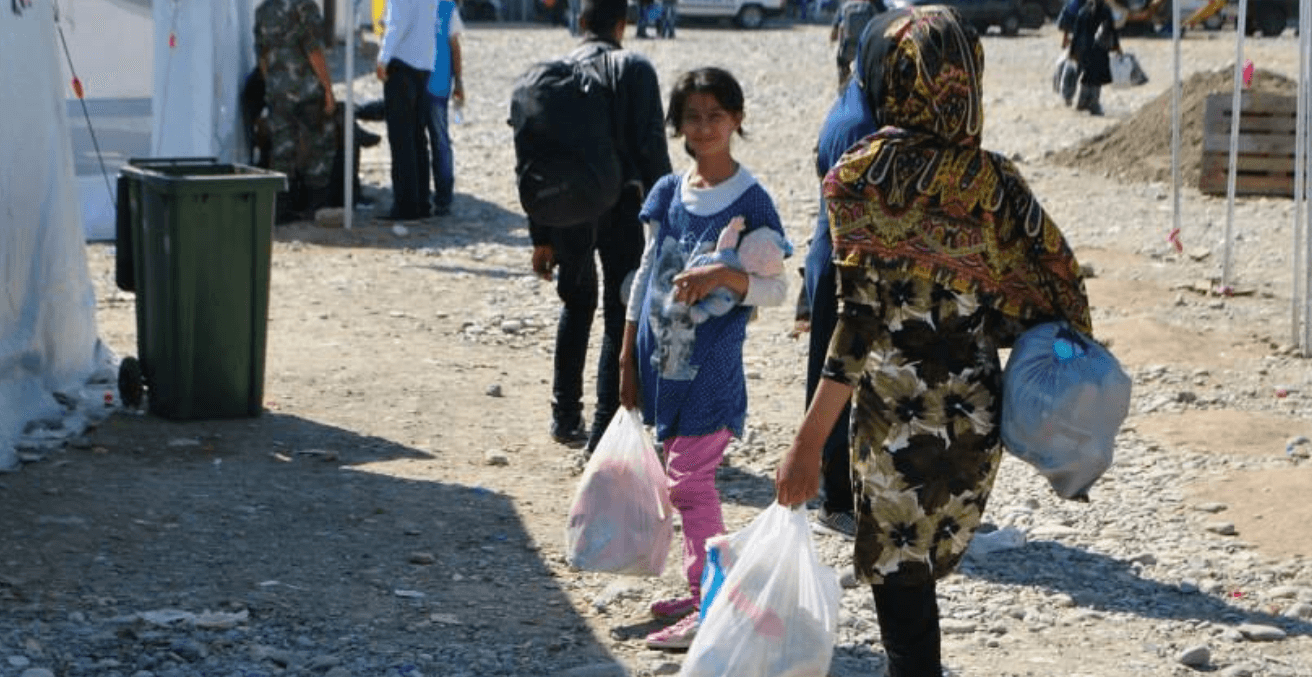Australia's Myopia on the Global Compacts on Refugees and Migration

As a nation built on immigration, Australia should participate in instruments to enhance international cooperation on human mobility.
2018 will go down in history as a significant year for the protection of refugees and migrants,at least on paper. The adoption of two new instruments on people movement – the Global Compact on Refugees and the Global Compact for Safe, Orderly and Regular Migration – signals new moral and political undertakings by the world’s governments. They promise to respect the human rights of people on the move, to provide the conditions for them to live in safety and with dignity, and to empower them to enrich the societies in which they live.
However, in the current global political environment, commitments such as these could not be taken for granted. Indeed, 2018 was also the year that saw the on-going but escalating exodus of Venezuelans, fleeing for a combination of economic, social, political, and humanitarian reasons.This backdrop makes it all the more remarkable that any new agreements were reached at all, let alone ones that reinforce the importance of existing international legal principles and recognize the positive contributions of refugees and migrants to our societies. The Global Compacts
The Global Compacts on Refugees and Migration are intended to enhance international cooperation on human mobility, albeit within a framework that expressly recognizes ”the primary responsibility and sovereignty of States”.The Refugee Compact focuses on enhancing more predictable and equitable responsibility-sharing when it comes to large-scale refugee movements and protracted displacement. It seeks to prevent displacement where possible, respond more effectively when people are displaced, and find solutions for those who need protection, including by supporting conditions for return, and expanding access to resettlement and other protection pathways. The United Nations Refugee Agency (UNHCR) believes that the Refugee Compact marks “an evolution in governance” of refugee protection with the potential to make a real difference in the lives of refugees and their host communities. If it can, this will be a game-changer.
By contrast, the Migration Compact is in many ways the beginning for the global regulation of migration, ‘offer[ing] a 360-degree vision’. While it also draws on existing human rights principles, it is the first time that the world has adopted a comprehensive agreement on migration generally. It is therefore framed as ‘a milestone in the history of the global dialogue and international cooperation on migration’. It aims to foster ‘international cooperation among all relevant actors on migration, acknowledging that no State can address migration alone’, and seeks to build consensus on principles and practices to improve migration management and the rights of migrants. It calls for migration policies based on data and evidence, and points to the need to minimize the drivers and structural factors that force people to leave their homes in the first place.
Australia’s Role
What does all this mean for Australia’s role, both on the international stage and at home?
During the drafting of the Global Compacts, Australia was an engaged and often constructive contributor. It took an active role in the process, which is why its withdrawal from the Migration Compact is both surprising and unfortunate. The prime minister, home affairs minister and foreign affairs minister are simply wrong when they say that the Migration Compact “fails to adequately distinguish between people who enter Australia illegally and those who come to Australia the right way, particularly with respect to the provision of welfare and other benefits”. The Compact does nothing of the sort.
Likewise, the home affairs minister’s concern that the Compact would give Australian courts grounds to undermine the government’s policy and let more refugees stay in Australia is a total red herring. The Migration Compact is not about refugees at all, and it is not an instrument that would bind Australian courts in any way. Not even international treaties can be directly invoked in Australian courts, so a non-legally binding instrument like the Migration Compact would have even less influence.
While the Refugee Compact is focused on large-scale refugee situations, which have never existed in this country, Australia can play an important role in providing support to host countries and durable solutions for refugees. We have history as a leader in this regard. Our partnerships in humanitarian assistance, development, technical and financial support are crucial, as is our commitment to on-going and enhanced resettlement.
There is also an important opportunity to ramp up complementary pathways to admission, including family reunification, private or community sponsorship programmes, educational scholarships, labour mobility opportunities for refugees, and special humanitarian intakes.
In Australia, 2018 has not seen many improvements for refugees and people seeking asylum. We have witnessed the steady, if not accelerating, deterioration of the mental and physical health of people on Nauru and Manus Island, described by experts as worse than they have seen in war zones or refugee camps around the world. Even the former head of Australia’s Border Force, Roman Quadvlieg, remarked on this. He described sites as “reminiscent of the world’s slums [he had] seen”, with “unsettling signs of the volatility of an incarcerated population … and the omnipresent, but indefinable, sense of dread and foreboding.”
Life for the 30,000 asylum seekers living in the community is not all that rosy either. In August, the government made significant cuts to social support, with about 60 per cent of asylum seekers losing their benefits of $250 a week, casework support, and access to torture and trauma services – even if they do not have a job or other income. According to the Refugee Council of Australia, such cuts are likely to leave thousands of people hungry and homeless. In the UK, similar actions that resulted in asylum seekers becoming destitute were found to constitute inhuman and degrading treatment contrary to human rights law.
We all know that it doesn’t have to be like this. It shouldn’t be like this. Let’s re-imagine how it could be, with a bit of leadership, commitment and follow-through.
We need to return to complying with our international legal obligations and ensure that they are fully incorporated into domestic law. We need to provide reception conditions that give people seeking asylum access to medical care, employment, education, and such other assistance as will enable them to live in dignity in the community pending the determination of their claims. We need to provide a fair, efficient and transparent system for processing asylum claims by well-trained decision-makers – harking back to the days when our system was held up as a model of best practice.
We need to create safe and legal pathways to protection, while also addressing the root causes of displacement. Since 1945, Australia has played a key role in providing protection opportunities for refugees – both by resettling people in need from overseas, and, for many years, by enabling people seeking asylum to apply for protection in Australia. Refugees have helped to make this country what it is today. The success of earlier programs, including post-war nation-building labour schemes which gave displaced people from Europe the chance of a new life, means that Australia can have confidence in the positive contributions that refugees will make when offered opportunity and hope. Providing a welcoming, secure and respectful environment for refugees results in benefits for everyone and a stronger, more socially cohesive Australia.
Jane McAdam is Scientia Professor of Law and Director of the Andrew & Renata Kaldor Centre for International Refugee Law at UNSW.
This article is based on a speech given at the Kaldor Centre for International Refugee Law Annual Conference on 23 November 2018. It is republished with permission.





